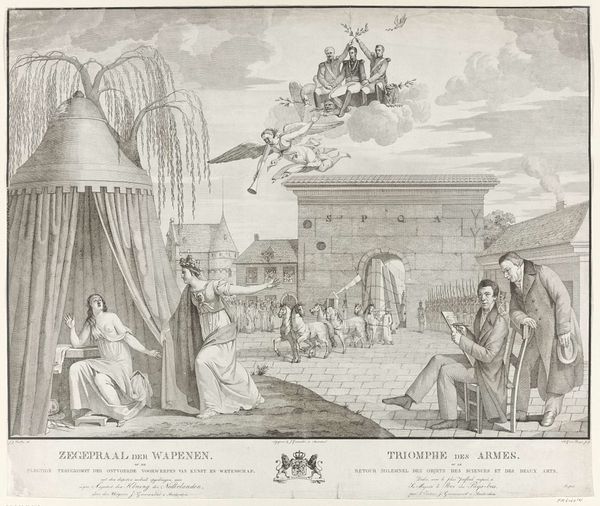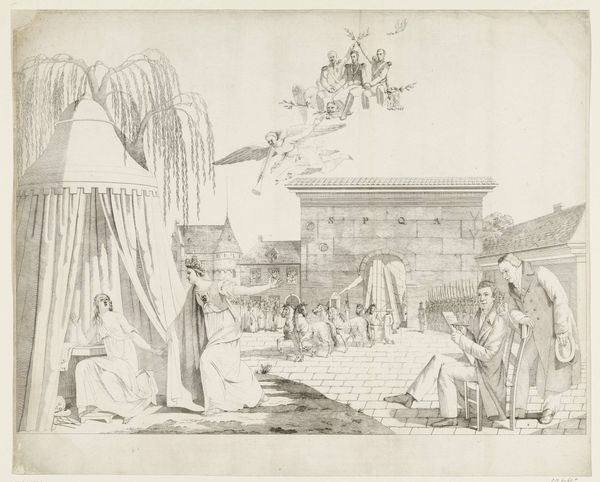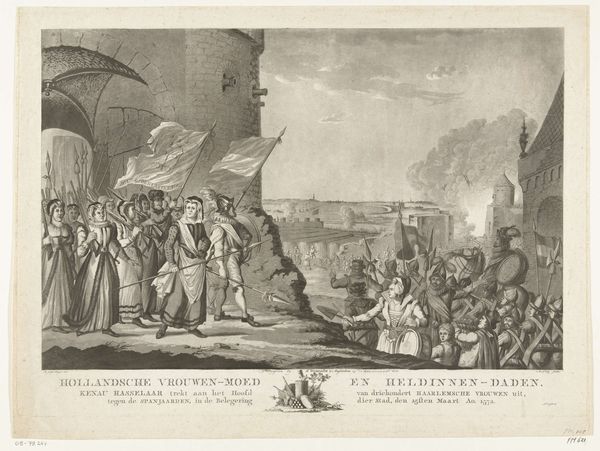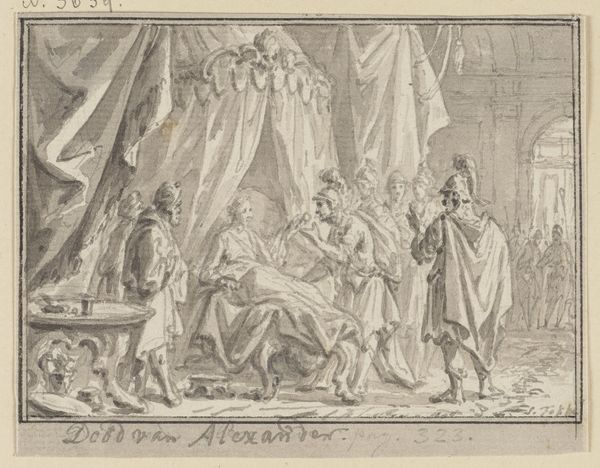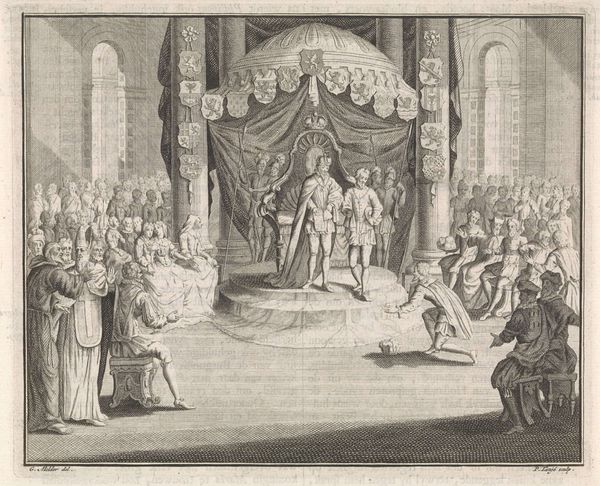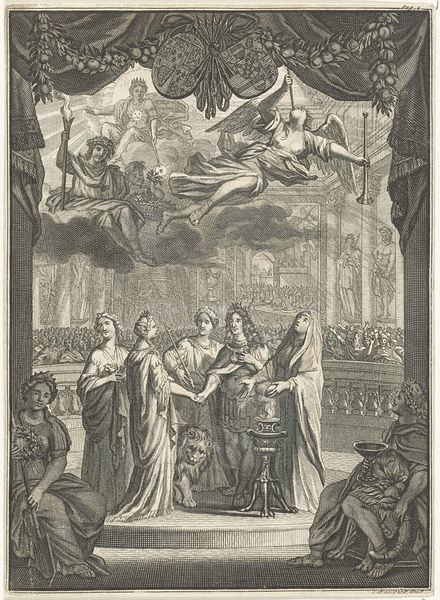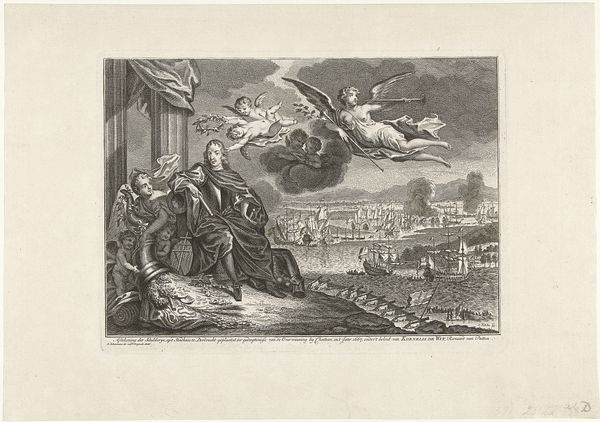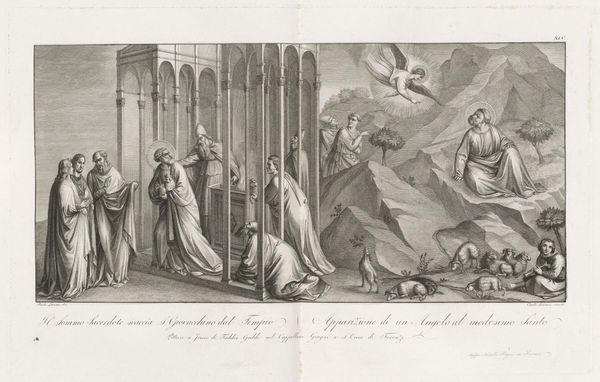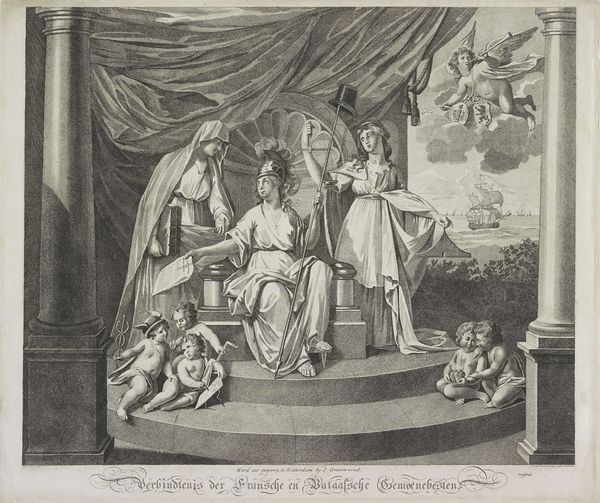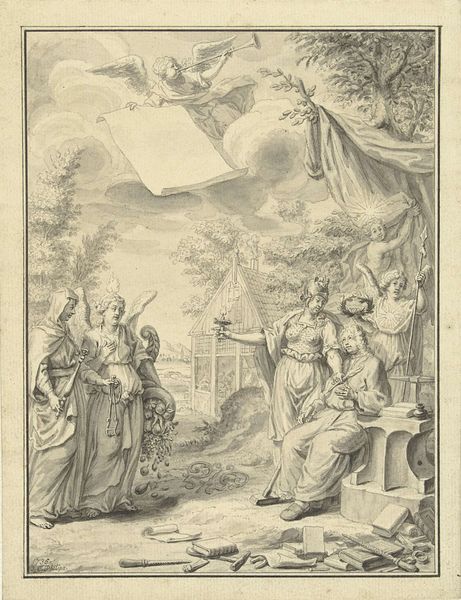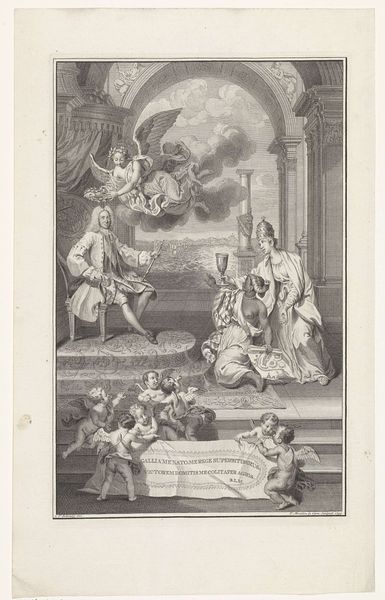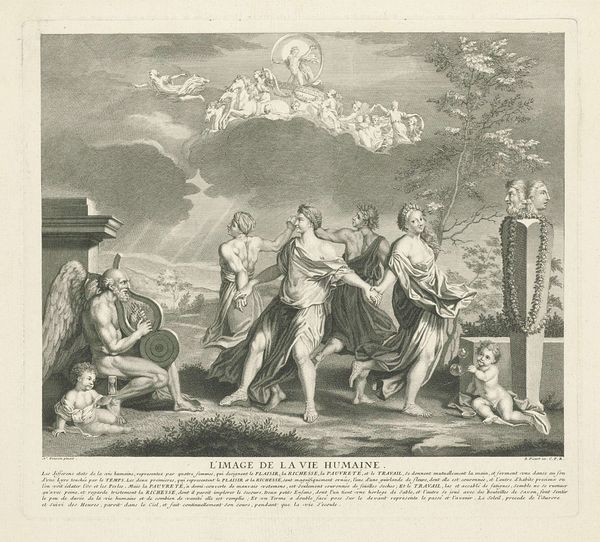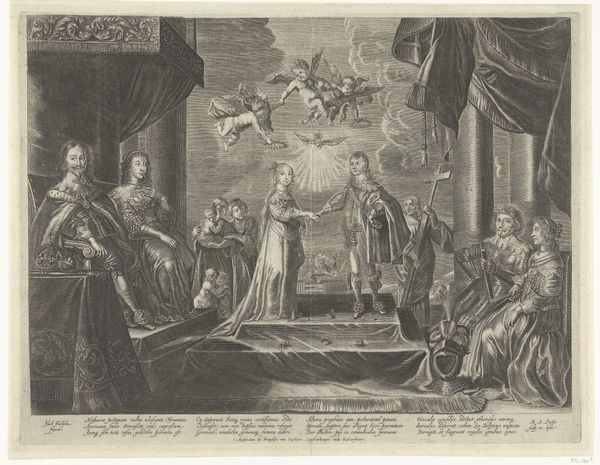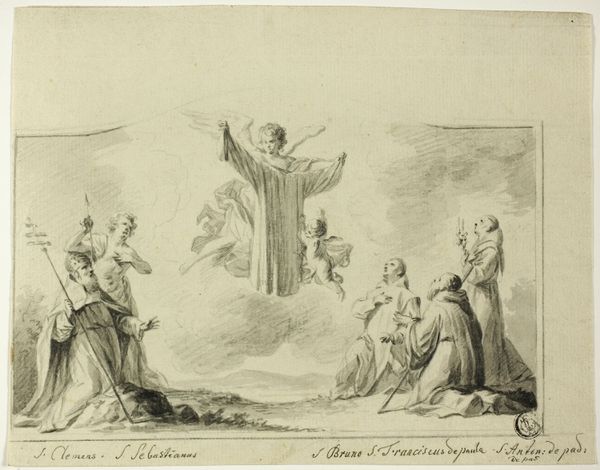
Allegorie op de terugkeer van de ontvoerde voorwerpen van kunst en wetenschap te Antwerpen, 1815 1821
0:00
0:00
drawing, paper, ink, pen
#
drawing
#
neoclacissism
#
allegory
#
paper
#
ink
#
pen
#
cityscape
#
history-painting
Dimensions: height 505 mm, width 673 mm
Copyright: Rijks Museum: Open Domain
Curator: This captivating drawing, "Allegory on the Return of the Removed Objects of Art and Science to Antwerp," was rendered in 1821 by Jean Joseph Verellen. It's currently housed right here at the Rijksmuseum. The work, done with pen and ink on paper, depicts… well, what are your initial thoughts? Editor: Okay, wow, my first impression is a sense of… theatricality. It feels like a stage set. A bit crowded, almost like a dream where too much is happening all at once. Very classical and almost surreal! I'm sensing some deep stuff here, layered and lovely. Curator: You've keyed into something important. This is Neoclassical allegory, loaded with symbolism. Verellen is engaging with the tumultuous period of the Napoleonic Wars and the subsequent restoration of cultural artifacts. We can view this drawing as a complex commentary on power, cultural heritage, and national identity. Editor: Ah, that explains the figures floating on clouds and the angel with the trumpet. It's definitely operatic, that feeling of triumph. So, is this about the stuff Napoleon looted? Curator: Precisely! Napoleon's armies seized countless artworks and scientific specimens from conquered territories. This drawing celebrates the return of these treasures to Antwerp following Napoleon's defeat. You see the allegorical figure representing Antwerp receiving back its cultural patrimony. The drawing really speaks to a broader history of colonial plunder and restitution, conversations very relevant in contemporary debates around museums and ownership. Editor: So much history wrapped in these fine lines. It’s interesting how even celebrations are fraught, looking at it from a modern, decolonized perspective. Makes you wonder what "victory" really means. Curator: Exactly. The work can be seen as part of a longer dialogue about the politics of cultural heritage, particularly how art and objects have been weaponized to build and bolster national identities and imperial power. It is a history of ownership and display that’s clearly embedded in geopolitical tensions, wouldn't you agree? Editor: I totally see it. It’s not just a pretty picture; it's a statement and a reminder. These conversations… they don't end. So much truth and unsettling baggage here. Curator: Precisely, Jean Joseph Verellen's drawing offers a glimpse into history but reflects a current reality still resonant today. Editor: I feel this will haunt me in a wonderful way. A gift that has offered me more to unpack and think about.
Comments
No comments
Be the first to comment and join the conversation on the ultimate creative platform.
